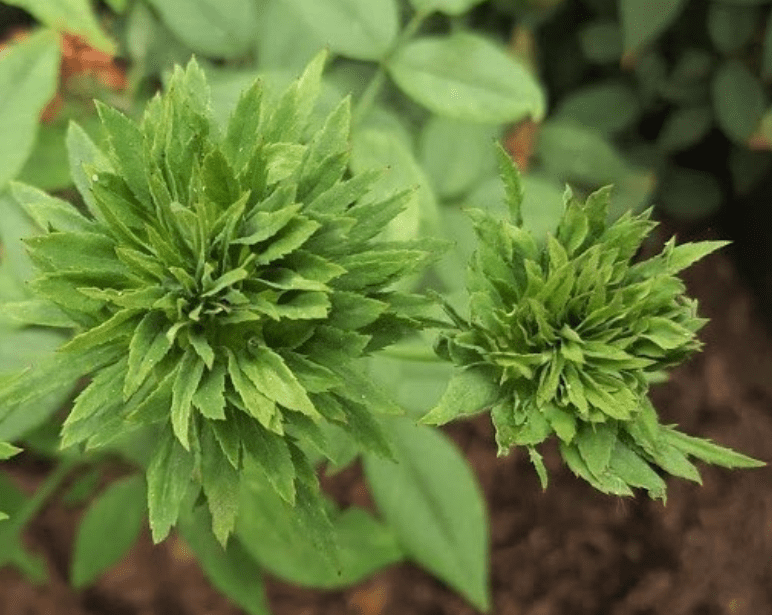Green Rose History
Unless you catch a whiff of its peppery scent, you can stroll right past this green rose bush without even realizing it’s in bloom. For a rose, you must admit, that’s a unique trait.
What was the source of this rose? The past seems a little hazy. Some ascribe it to a spontaneous mutation of a Chinese rose around 1743, while others placed it in the United States in 1827, Charleston in 1833, and France in 1855. In 1856, it was reprinted and officially introduced in the United Kingdom.
Regardless of its murky past, the green rose, Rosa chinensis viridiflora, is the only authentic green rose in existence today.
It’s an old variety with several other names, including Rosa viridiflora and possibly others.
It lasts well in water and provides a unique accent to an arrangement, where it is beautifully combined with yellow and white blooms of any sort.
Usually, the bright colors and elegant forms of roses advertise their blooms, almost demanding that one “take time to smell the flowers.” But Rosa chinensis `Viridiflora’ camouflages itself, hiding its flowers like a chameleon, green flowers among green leaves.
Sometimes this bush is also called Rosa monstrosa, or sometimes simply the green rose. By whatever name it’s known, it’s a true garden conversation piece. The flowers are apple green, shading to an attractive bronze in cool weather, with an unroselike tufted shape and a spicy, peppery fragrance.
Green Rose Hardiness
Hardy to Zone 6 is a jaunty, cheerful, and incredibly tough plant, easily started from cuttings and maturing to 3 to 4 feet high and 2 to 3 feet wide. Despite what its name may suggest. The green rose is not a product of any rose-breeding program.
Its color, and traditional rose shape lack point to a much more primitive origin, like a genetic throwback to distant ancestors. The green rose may not be a plant for all gardeners, especially those who consider plants without splashy blooms a waste of garden space.
Other gardeners, however, are sure to enjoy growing this curiosity. Those who aren’t sure how to use this plant in the garden may want to try it in a large container, where it grows cheerfully with the maintenance of regular waterings and occasional pruning.
The green rose is definitely a flower arranger’s favorite, no matter how gardeners may view this plant.
Green Rose Cultivating
The green rose’s blossom is a distinct average-sized (approximately 2 inches in diameter) full double bloom with numerous little dark-green petals, not a green-tinged rose.
It tolerates shade, grows to a height and width of about 3 feet, and has few thorns.
Throughout the year, bloom clusters grow, and the plant is rarely not in bloom. Green roses can be cultivated in containers or the landscape.
Green roses have unique anatomy when compared to other types of roses. Sepals make up the entirety of the green rose blossoms. On a normal rose, sepals are the leaves that encircle the blossoms.
Instead of generating typical petals, green rose bushes continue to produce sepals until the overgrown foliage resembles a flower.
Wherever it is used, the green rose is a delightfully different plant for any floral arrangement or garden setting.


























